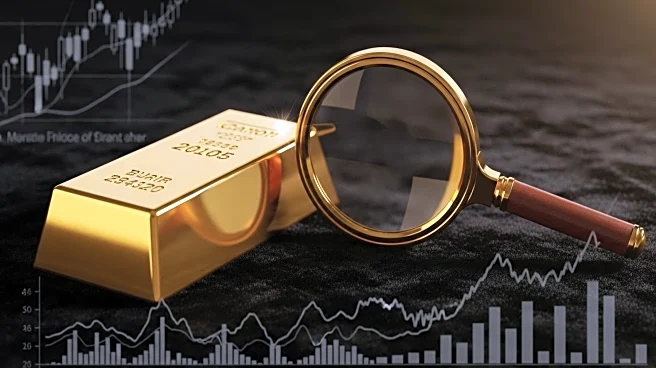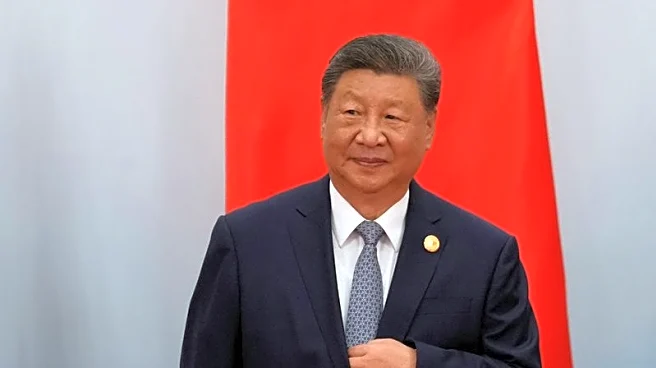What's Happening?
Gold prices have surged to a record high of $3,524.27 per ounce, driven by expectations of U.S. interest rate cuts and geopolitical uncertainties. Analysts predict that gold could reach between $3,600 and $3,900 in the near to medium term, with potential to test the $4,000 level in 2026. The rally is supported by a bearish outlook for the U.S. dollar, which has fallen nearly 11% since President Trump returned to office, making gold cheaper for holders of other currencies. Central banks, particularly in developing countries, are increasing their gold reserves, further boosting demand. Gold-backed ETFs have also seen significant inflows, with SPDR Gold Trust holdings rising to their highest since August 2022.
Why It's Important?
The surge in gold prices reflects broader economic and geopolitical uncertainties, including concerns over Federal Reserve independence and tariff-related economic uncertainty. As central banks diversify away from dollar reserves, gold's appeal as a safe-haven asset is strengthened. This trend could impact U.S. financial markets, as investors shift focus from traditional assets like U.S. Treasuries to gold. The increase in gold-backed ETF holdings indicates strong investor confidence in gold's long-term value, potentially affecting investment strategies and market dynamics.
What's Next?
Market participants are closely watching Federal Reserve policy decisions, with a September interest rate cut widely anticipated. This could further influence gold prices and investor behavior. Additionally, geopolitical tensions, particularly in the Middle East and between Russia and Ukraine, may continue to drive gold demand. Central banks are expected to maintain their gold accumulation strategies, potentially leading to sustained high prices.
Beyond the Headlines
The shift in central bank reserve strategies away from the U.S. dollar could have long-term implications for global financial stability and currency markets. As gold becomes a larger share of reserves, the traditional dominance of dollar-denominated assets may be challenged, affecting international trade and investment flows.












